Abstract
In this report are described seven patients assessed clinically and neuropsychologically in whom mirror movements affecting predominantly the hands occurred as a congenital disorder. These mirror movements, representing a specific type of abnormal synkinesia, may arise as a hereditary condition, in the presence of a recognisable underlying neurological abnormality, and sporadically, and the seven patients provide more or less satisfactory examples of each of these three groups. Despite the apparent uniformity of the disorder, the heterogeneity and variability may be marked, examples in some of our patients including the pronounced increase in tone that developed with arm movement, and the capacity for modulation of the associated movement by alteration of neck position and bio-feedback. Various possible mechanisms are considered; these include impaired cerebral inhibition of unwanted movements, and functioning of abnormal motor pathways. Emphasis has been placed on the putative role of the direct, crossed corticomotoneurone pathways and on the unilateral and bilateral cerebral events that precede movement.
Full text
PDF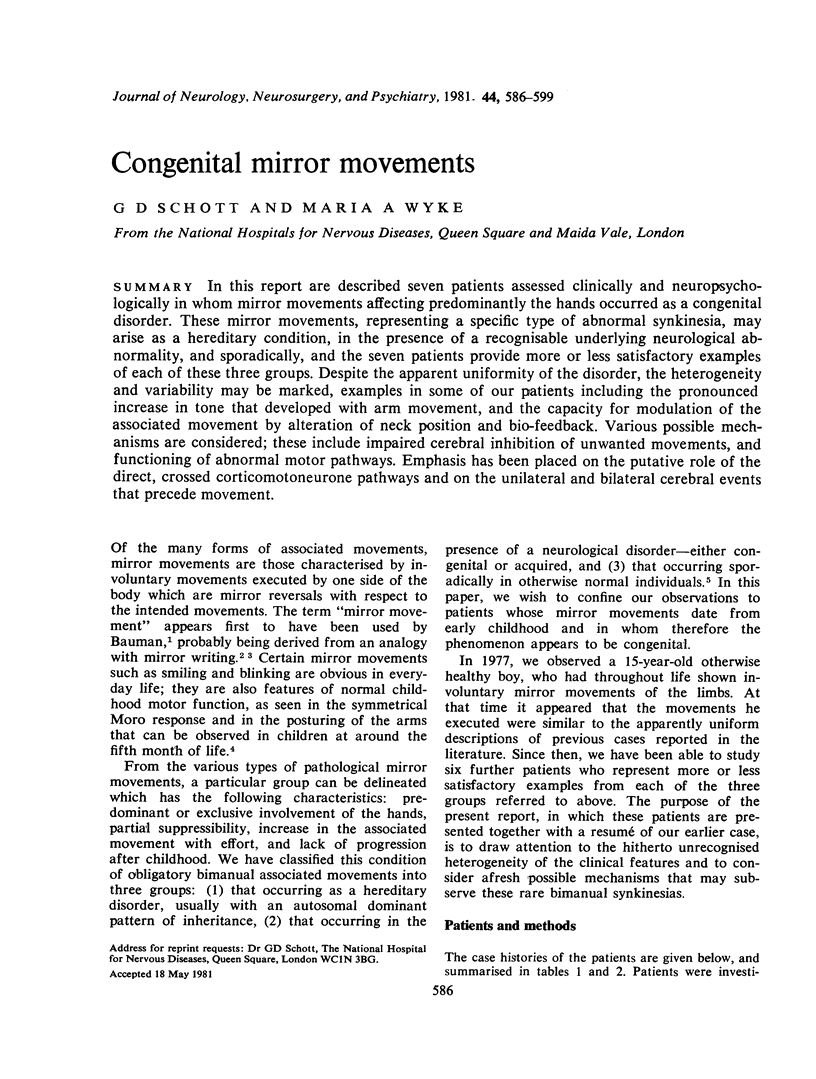
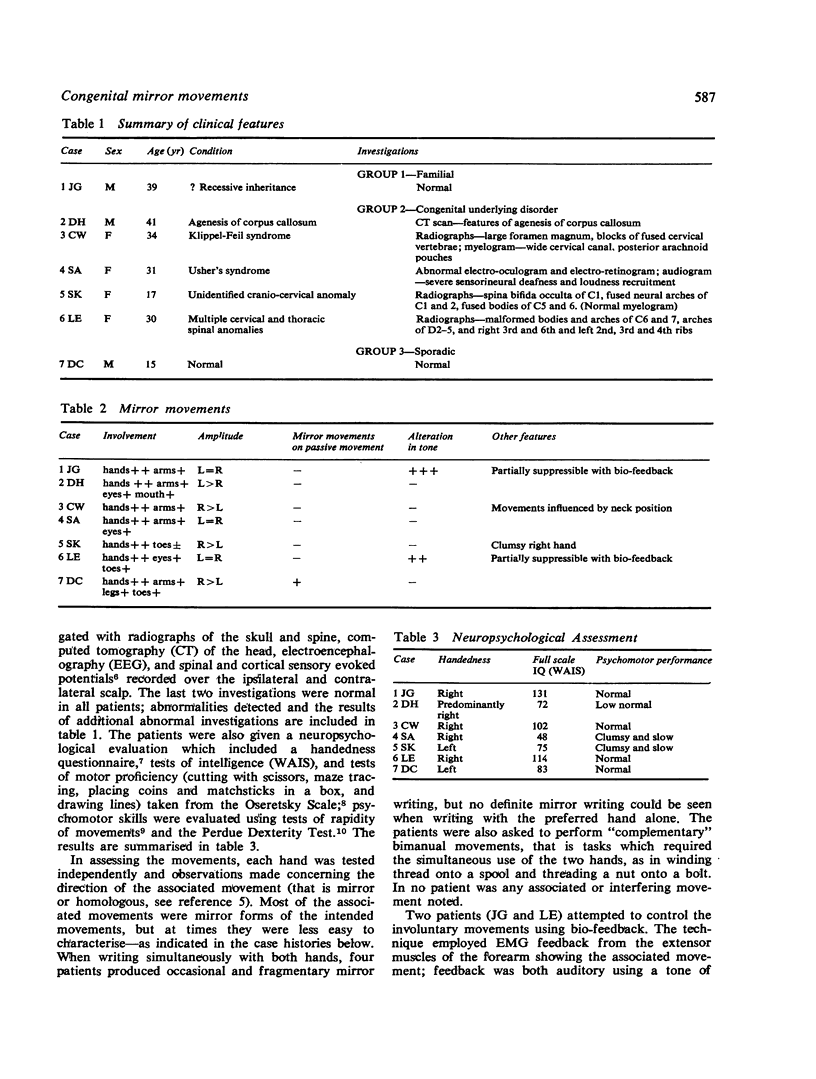
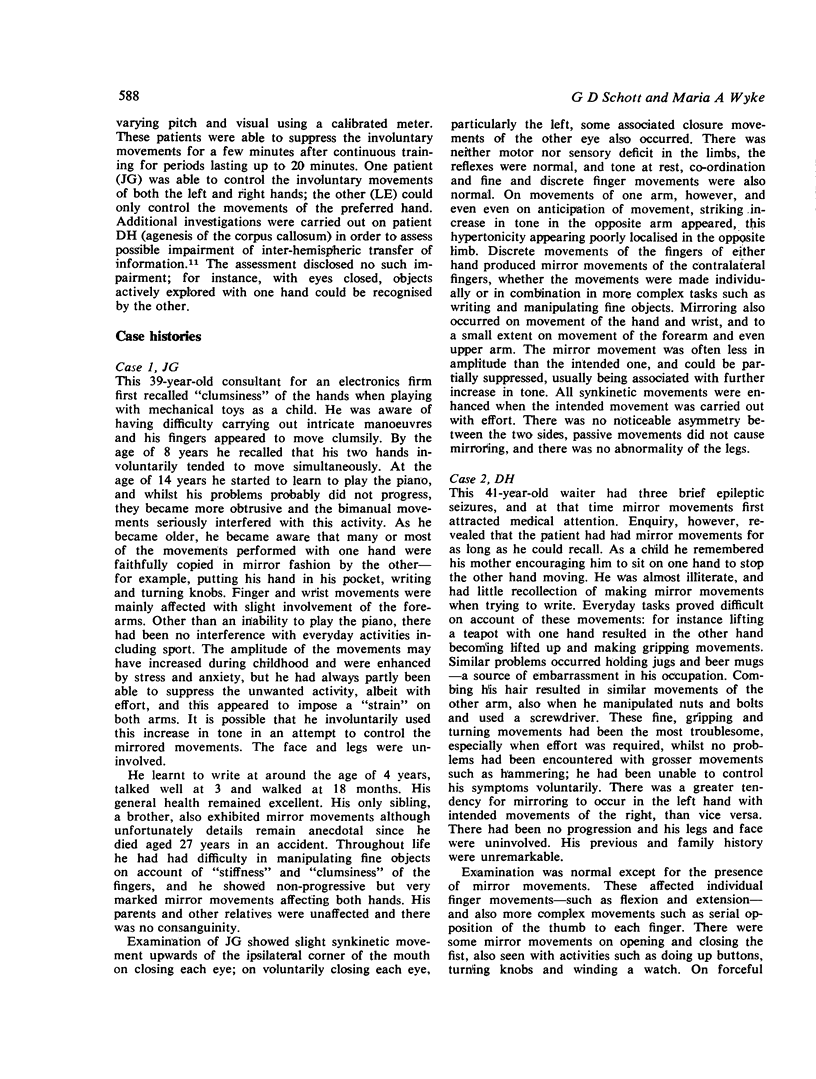
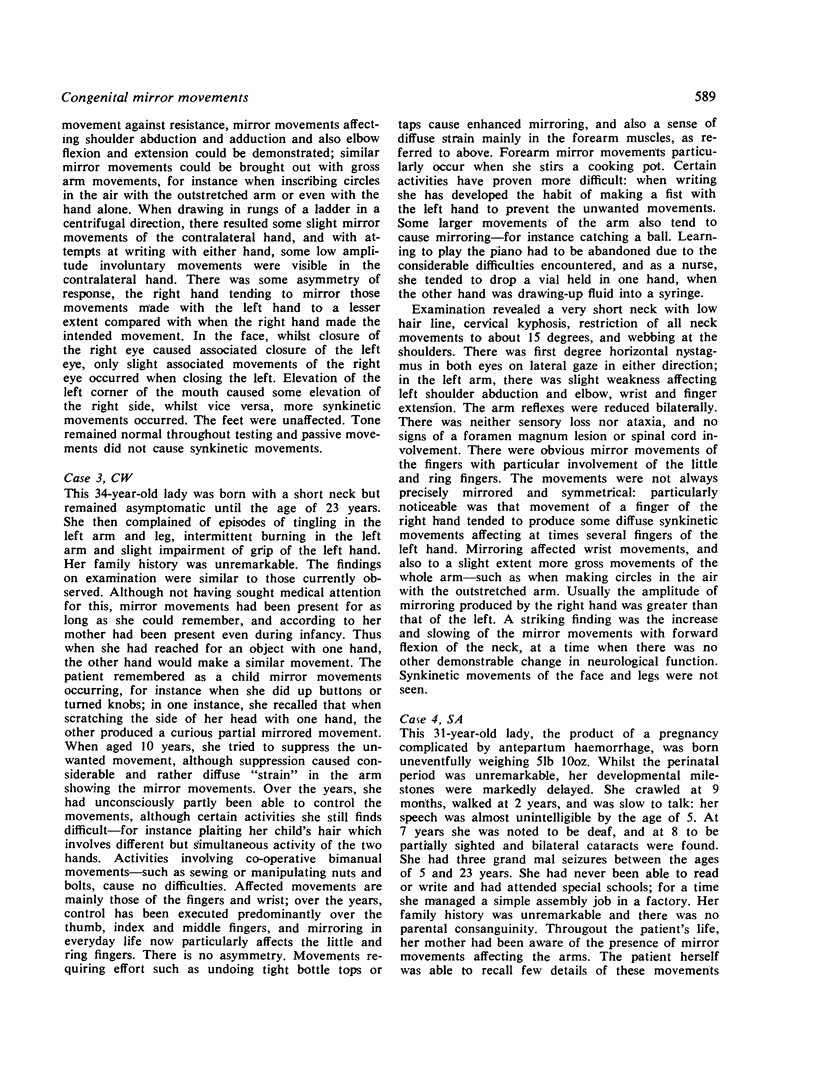
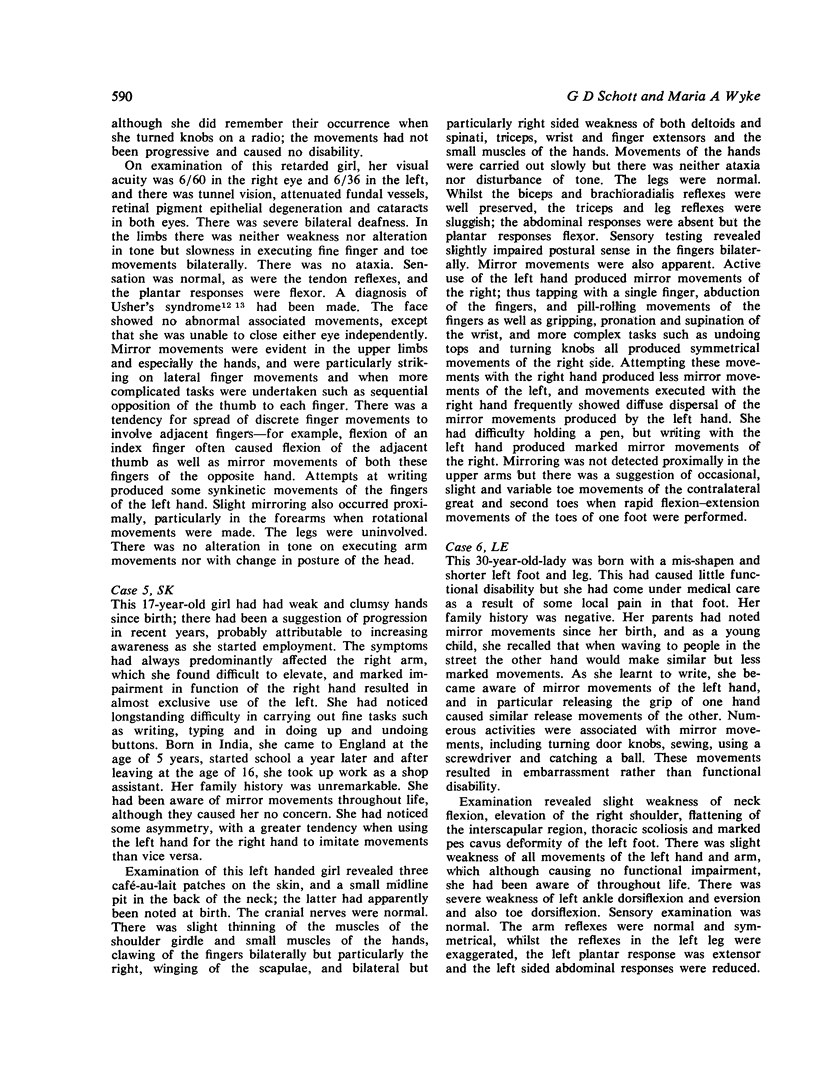
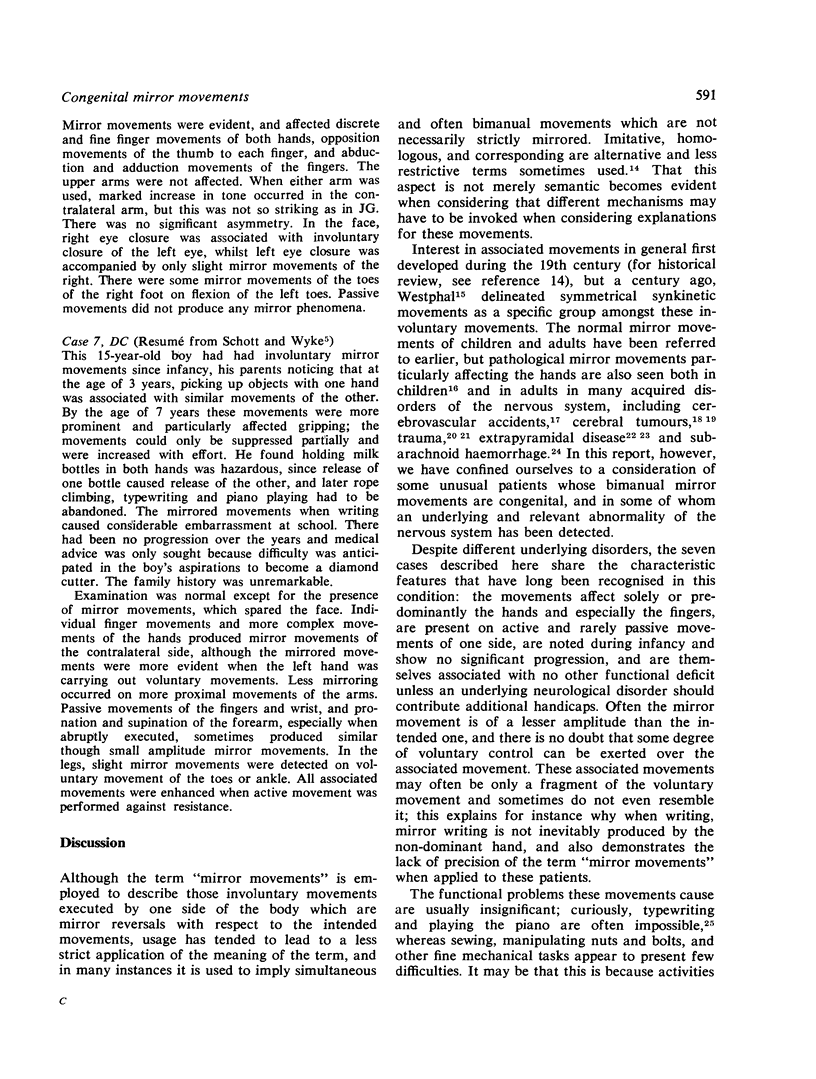
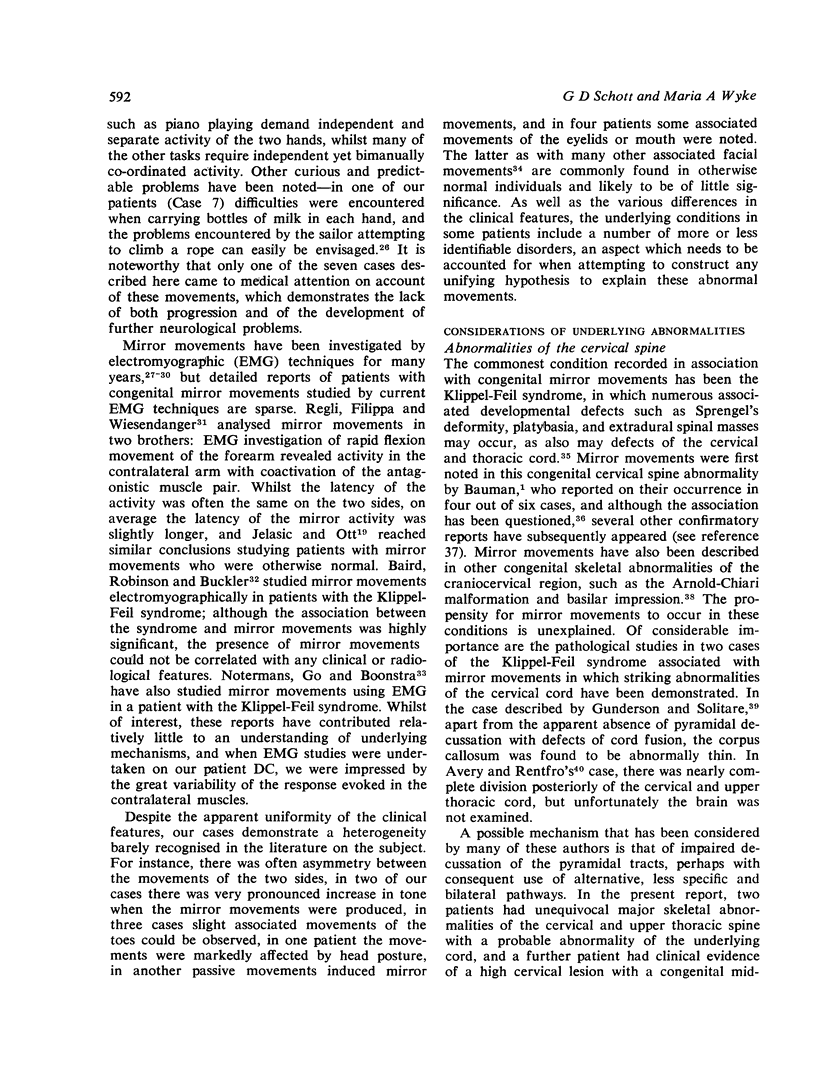
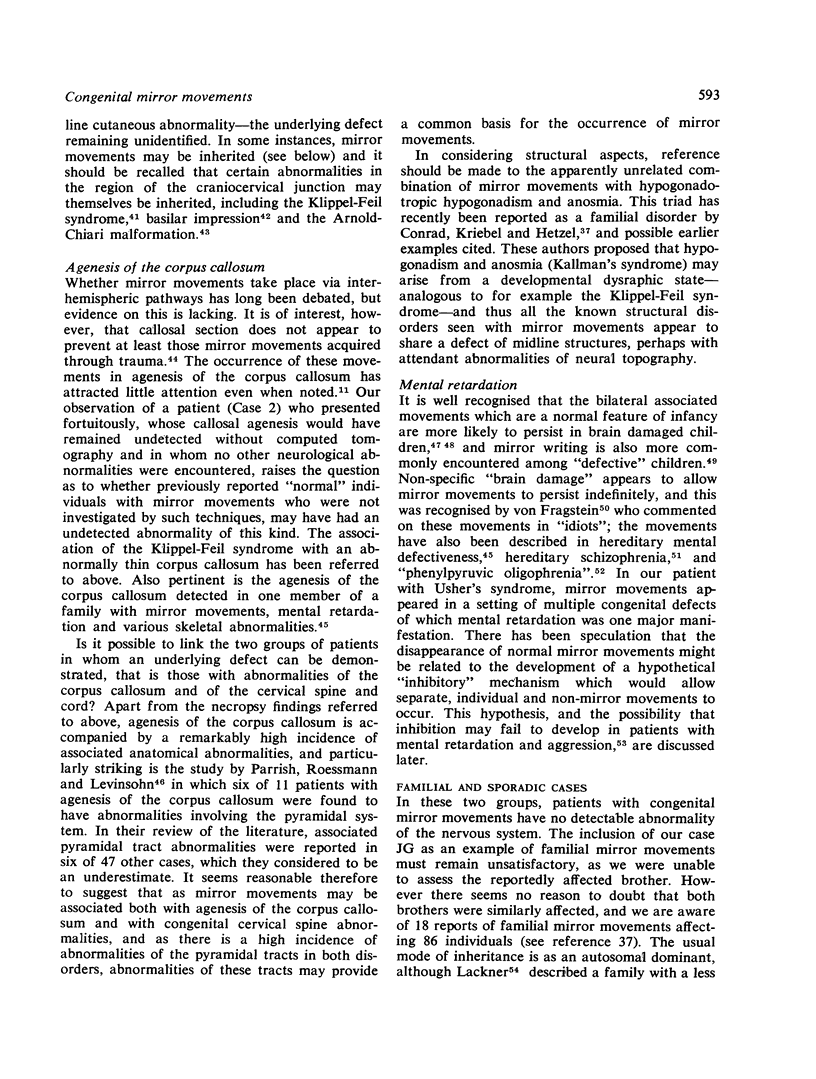
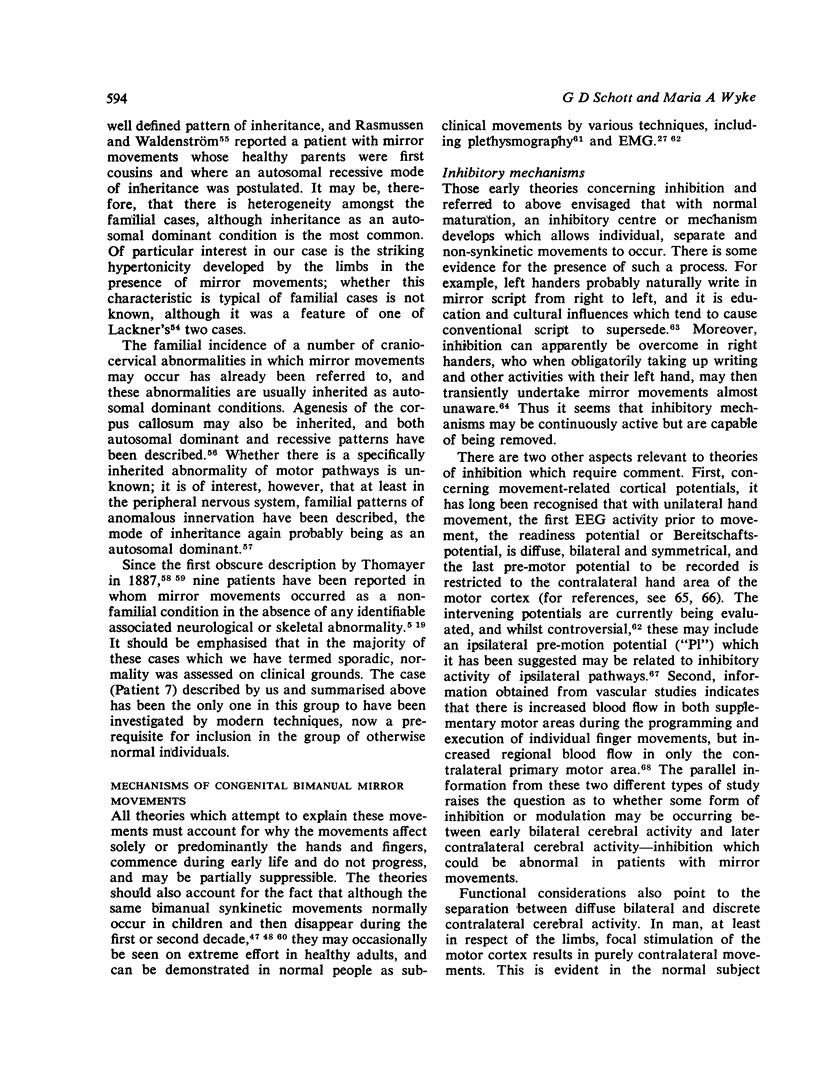
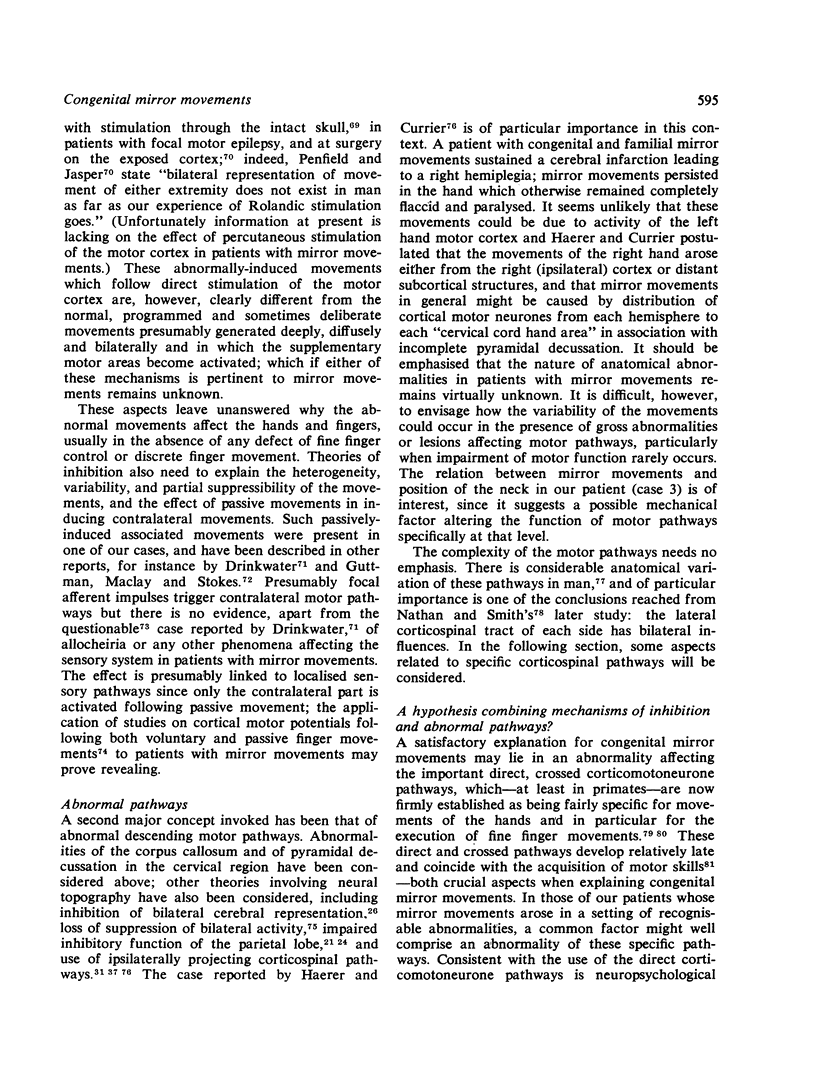
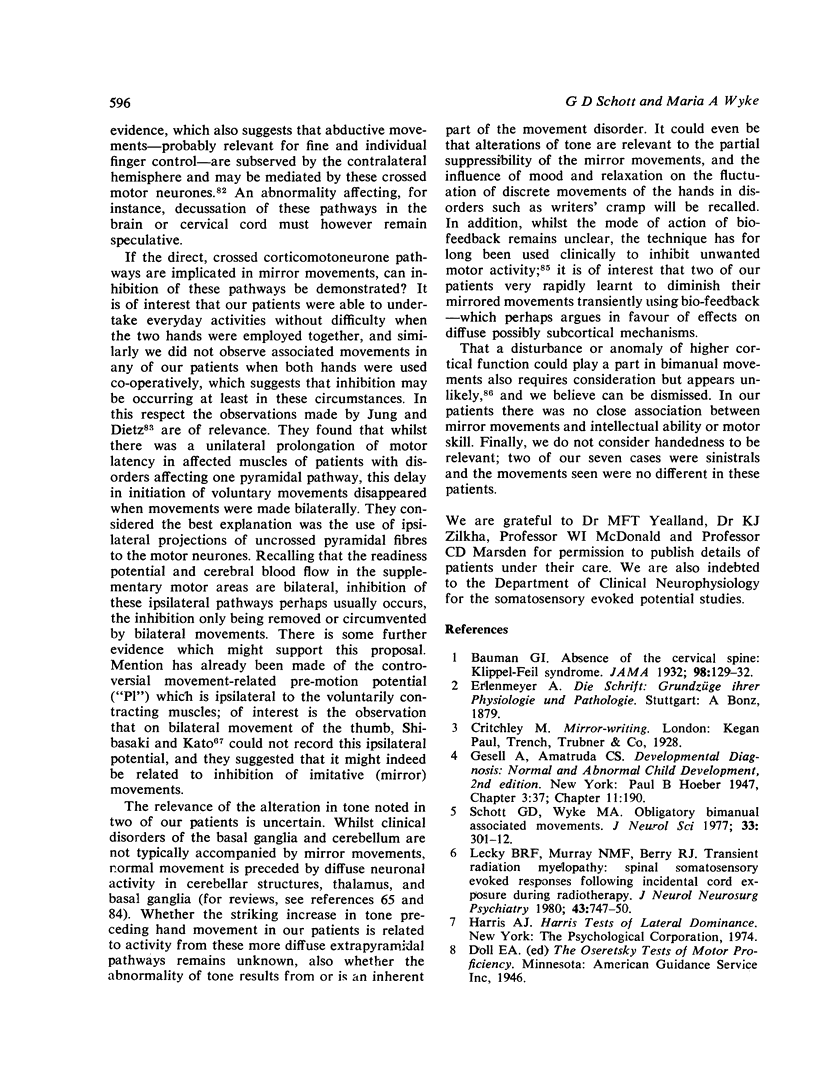
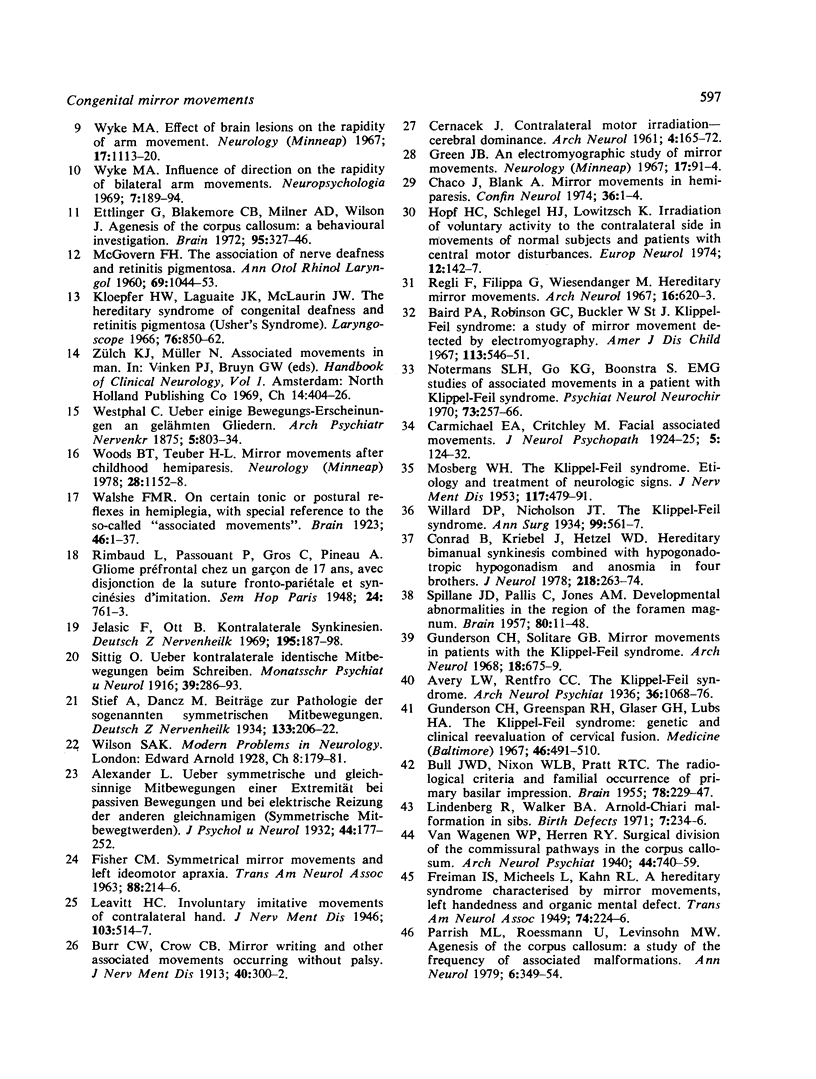
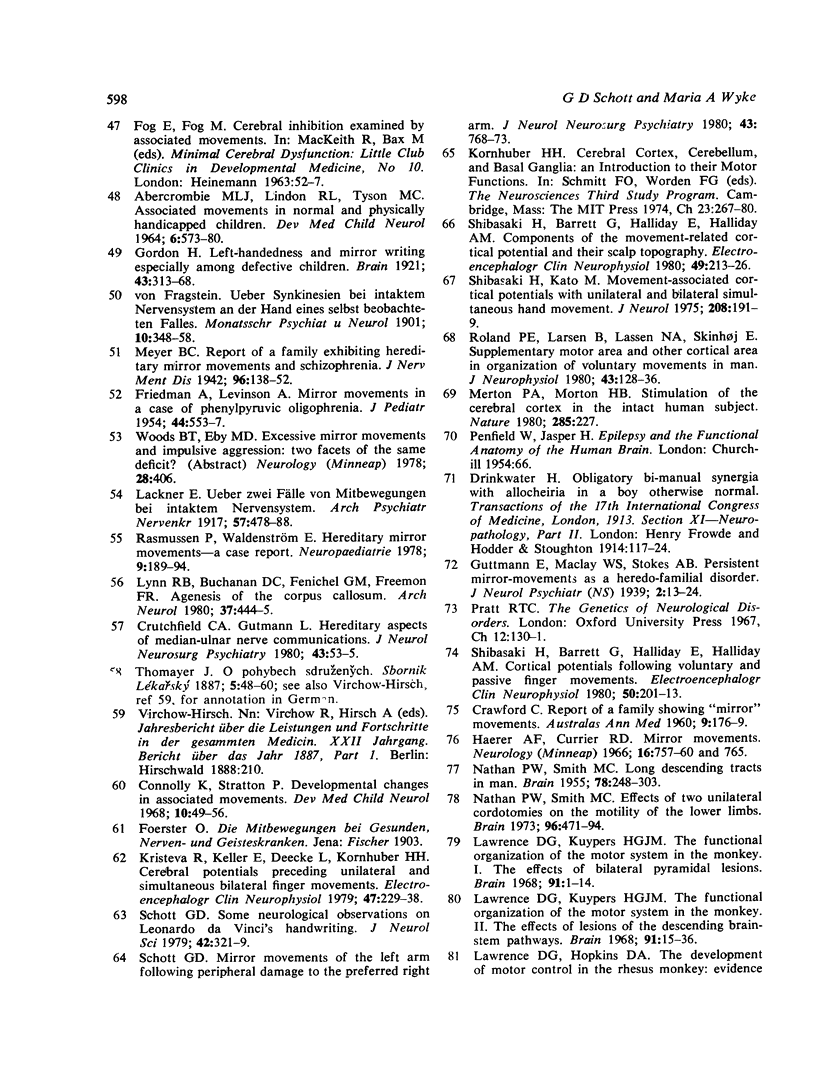
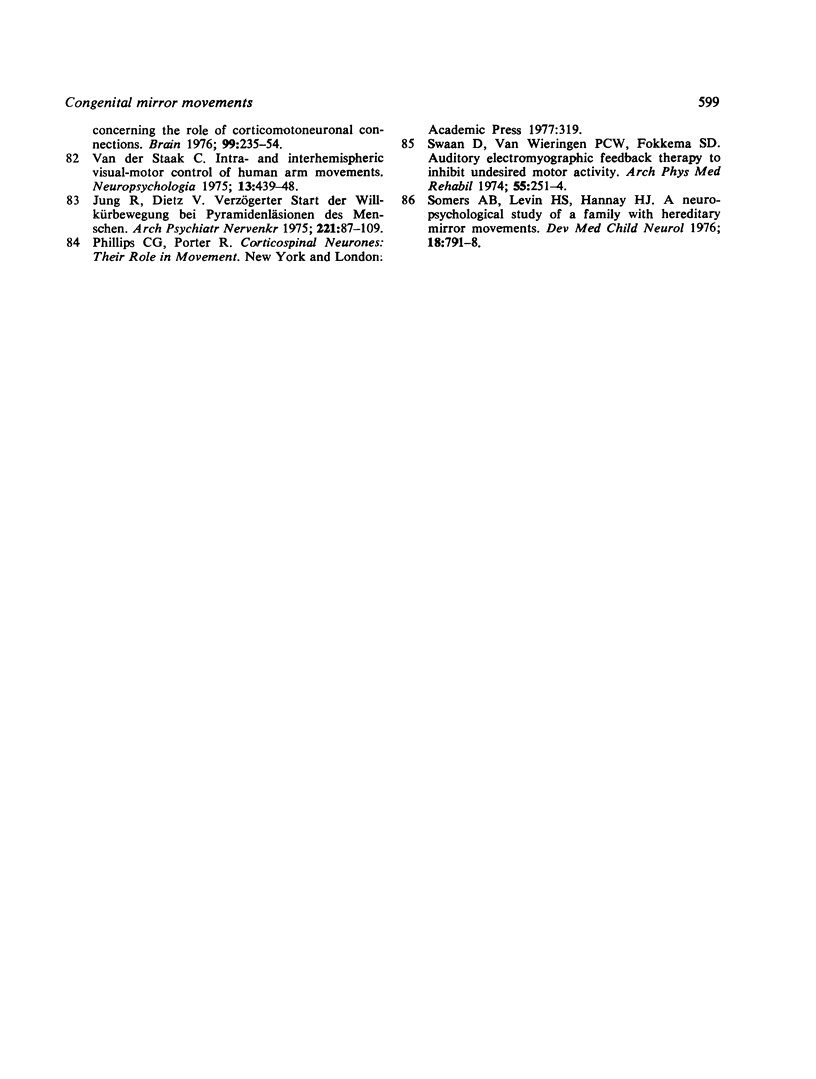
Selected References
These references are in PubMed. This may not be the complete list of references from this article.
- ABERCROMBIE M. L., LINDON R. L., TYSON M. C. ASSOCIATED MOVEMENTS IN NORMAL AND PHYSICALLY HANDICAPPED CHILDREN. Dev Med Child Neurol. 1964 Dec;6:573–580. doi: 10.1111/j.1469-8749.1964.tb02795.x. [DOI] [PubMed] [Google Scholar]
- BULL J. W., NIXON W. L., PRATT R. T. The radiological criteria and familial occurrence of primary basilar impression. Brain. 1955;78(2):229–247. doi: 10.1093/brain/78.2.229. [DOI] [PubMed] [Google Scholar]
- Baird P. A., Robinson G. C., Buckler W. S. Klippel-Feil syndrome. A study of mirror movement detected by electromyography. Am J Dis Child. 1967 May;113(5):546–551. doi: 10.1001/archpedi.1967.02090200078006. [DOI] [PubMed] [Google Scholar]
- CERNACEK J. Contralateral motor irradiation--cerebral dominance. Its changes in hemiparesis. Arch Neurol. 1961 Feb;4:165–172. doi: 10.1001/archneur.1961.00450080047005. [DOI] [PubMed] [Google Scholar]
- CRAWFORD C. Report of a family showing "mirror" movements. Australas Ann Med. 1960 Aug;9:176–179. doi: 10.1111/imj.1960.9.3.176. [DOI] [PubMed] [Google Scholar]
- Chaco J., Blank A. Mirror movements in hemiparesis. Confin Neurol. 1974;36(1):1–4. doi: 10.1159/000102779. [DOI] [PubMed] [Google Scholar]
- Connolly K., Stratton P. Developmental changes in associated movements. Dev Med Child Neurol. 1968 Feb;10(1):49–56. doi: 10.1111/j.1469-8749.1968.tb02837.x. [DOI] [PubMed] [Google Scholar]
- Conrad B., Kriebel J., Hetzel W. D. Hereditary bimanual synkinesis combined with hypogonadotropic hypogonadism and anosmia in four brothers. J Neurol. 1978 Aug 25;218(4):263–274. doi: 10.1007/BF00312882. [DOI] [PubMed] [Google Scholar]
- Crutchfield C. A., Gutmann L. Hereditary aspects of median-ulnar nerve communications. J Neurol Neurosurg Psychiatry. 1980 Jan;43(1):53–55. doi: 10.1136/jnnp.43.1.53. [DOI] [PMC free article] [PubMed] [Google Scholar]
- Ettlinger G., Blakemore C. B., Milner A. D., Wilson J. Agenesis of the corpus callosum: a behavioural investigation. Brain. 1972;95(2):327–346. doi: 10.1093/brain/95.2.327. [DOI] [PubMed] [Google Scholar]
- FISHER C. M. SYMMETRICAL MIRROR MOVEMENTS AND LEFT IDEOMOTOR APRAXIA. Trans Am Neurol Assoc. 1963;88:214–216. [PubMed] [Google Scholar]
- FRIEDMAN A., LEVINSON A. Mirror movements in a case of phenylpyruvic oligophrenia. J Pediatr. 1954 May;44(5):553–557. doi: 10.1016/s0022-3476(54)80341-6. [DOI] [PubMed] [Google Scholar]
- Green J. B. An electromyographic study of mirror movements. Neurology. 1967 Jan;17(1):91–94. doi: 10.1212/wnl.17.1.91. [DOI] [PubMed] [Google Scholar]
- Gunderson C. H., Greenspan R. H., Glaser G. H., Lubs H. A. The Klippel-Feil syndrome: genetic and clinical reevaluation of cervical fusion. Medicine (Baltimore) 1967 Nov;46(6):491–512. doi: 10.1097/00005792-196711000-00003. [DOI] [PubMed] [Google Scholar]
- Gunderson C. H., Solitare G. B. Mirror movements in patients with the Klippel-Feil syndrome. Neuropathologic observations. Arch Neurol. 1968 Jun;18(6):675–679. doi: 10.1001/archneur.1968.00470360097009. [DOI] [PubMed] [Google Scholar]
- Hopf H. C., Schlegel H. J., Lowitzsch K. Irradiation of voluntary activity to the contralateral side in movements of normal subjects and patients with central motor disturbances. Eur Neurol. 1974;12(3):142–147. doi: 10.1159/000114613. [DOI] [PubMed] [Google Scholar]
- Jelasic F., Ott B. Kontralaterale Synkinesien. Klinische und elektromyographische Untersuchungen bei idiopathischen und symptomatischen Formen. Dtsch Z Nervenheilkd. 1969;195(3):187–198. [PubMed] [Google Scholar]
- Jung R., Dietz V. Verzögerter Start der Willkürbewegung bei Pyramidenläsionen des Menschen. Arch Psychiatr Nervenkr (1970) 1975 Dec 31;221(2):87–109. doi: 10.1007/BF00431047. [DOI] [PubMed] [Google Scholar]
- Kloepfer H. W., Laguaite J. K. The hereditary syndrome of congenital deafness and retinitis pigmentosa. (Usher's syndrome). Laryngoscope. 1966 May;76(5):850–862. doi: 10.1288/00005537-196605000-00004. [DOI] [PubMed] [Google Scholar]
- Kristeva R., Keller E., Deecke L., Kornhuber H. H. Cerebral potentials preceding unilateral and simultaneous bilateral finger movements. Electroencephalogr Clin Neurophysiol. 1979 Aug;47(2):229–238. doi: 10.1016/0013-4694(79)90223-2. [DOI] [PubMed] [Google Scholar]
- Lawrence D. G., Hopkins D. A. The development of motor control in the rhesus monkey: evidence concerning the role of corticomotoneuronal connections. Brain. 1976 Jun;99(2):235–254. doi: 10.1093/brain/99.2.235. [DOI] [PubMed] [Google Scholar]
- Lawrence D. G., Kuypers H. G. The functional organization of the motor system in the monkey. I. The effects of bilateral pyramidal lesions. Brain. 1968 Mar;91(1):1–14. doi: 10.1093/brain/91.1.1. [DOI] [PubMed] [Google Scholar]
- Lawrence D. G., Kuypers H. G. The functional organization of the motor system in the monkey. II. The effects of lesions of the descending brain-stem pathways. Brain. 1968 Mar;91(1):15–36. doi: 10.1093/brain/91.1.15. [DOI] [PubMed] [Google Scholar]
- Lecky B. R., Murray N. M., Berry R. J. Transient radiation myelopathy: spinal somatosensory evoked responses following incidental cord exposure during radiotherapy. J Neurol Neurosurg Psychiatry. 1980 Aug;43(8):747–750. doi: 10.1136/jnnp.43.8.747. [DOI] [PMC free article] [PubMed] [Google Scholar]
- Lindenberg R., Walker B. A. Arnold-Chiari malformation in sibs. Birth Defects Orig Artic Ser. 1971 Feb;7(1):234–236. [PubMed] [Google Scholar]
- Lynn R. B., Buchanan D. C., Fenichel G. M., Freemon F. R. Agenesis of the corpus callosum. Arch Neurol. 1980 Jul;37(7):444–445. doi: 10.1001/archneur.1980.00500560074011. [DOI] [PubMed] [Google Scholar]
- MCGOVERN F. H. The association of nerve deafness and retinitis pigmentosa. Interval report. Ann Otol Rhinol Laryngol. 1960 Dec;69:1044–1053. doi: 10.1177/000348946006900411. [DOI] [PubMed] [Google Scholar]
- MOSBERG W. H., Jr The Klippel-Feil syndrome; etiology and treatment of neurologic signs. J Nerv Ment Dis. 1953 Jun;117(6):479–491. doi: 10.1097/00005053-195306000-00001. [DOI] [PubMed] [Google Scholar]
- Merton P. A., Morton H. B. Stimulation of the cerebral cortex in the intact human subject. Nature. 1980 May 22;285(5762):227–227. doi: 10.1038/285227a0. [DOI] [PubMed] [Google Scholar]
- NATHAN P. W., SMITH M. C. Long descending tracts in man. I. Review of present knowledge. Brain. 1955;78(2):248–303. doi: 10.1093/brain/78.2.248. [DOI] [PubMed] [Google Scholar]
- Nathan P. W., Smith M. C. Effects of two unilateral cordotomies on the motility of the lower limbs. Brain. 1973 Sep;96(3):471–494. doi: 10.1093/brain/96.3.471. [DOI] [PubMed] [Google Scholar]
- Notermans S. L., Go K. G., Boonstra S. EMG studies of associated movements in a patient with Klippel-Feil syndrome. Psychiatr Neurol Neurochir. 1970 Jul-Aug;73(4):257–266. [PubMed] [Google Scholar]
- Parrish M. L., Roessmann U., Levinsohn M. W. Agenesis of the corpus callosum: a study of the frequency of associated malformations. Ann Neurol. 1979 Oct;6(4):349–354. doi: 10.1002/ana.410060408. [DOI] [PubMed] [Google Scholar]
- Rasmussen P., Waldenström E. Hereditary mirror movements--a case report. Neuropadiatrie. 1978 May;9(2):189–194. doi: 10.1055/s-0028-1091479. [DOI] [PubMed] [Google Scholar]
- Regli F., Filippa G., Wiesendanger M. Hereditary mirror movements. Arch Neurol. 1967 Jun;16(6):620–623. doi: 10.1001/archneur.1967.00470240058007. [DOI] [PubMed] [Google Scholar]
- SPILLANE J. D., PALLIS C., JONES A. M. Developmental abnormalities in the region of the foramen magnum. Brain. 1957 Mar;80(1):11–48. doi: 10.1093/brain/80.1.11. [DOI] [PubMed] [Google Scholar]
- Schott G. D. Some neurological observations on Leonardo da Vinci's handwriting. J Neurol Sci. 1979 Aug;42(3):321–329. doi: 10.1016/0022-510x(79)90165-5. [DOI] [PubMed] [Google Scholar]
- Schott G. D., Wyke M. A. Obligatory bimanual associated movements. Report of a non-familial case in an otherwise normal left-handed boy. J Neurol Sci. 1977 Sep;33(3):301–312. doi: 10.1016/0022-510x(77)90127-7. [DOI] [PubMed] [Google Scholar]
- Shibasaki H., Barrett G., Halliday E., Halliday A. M. Components of the movement-related cortical potential and their scalp topography. Electroencephalogr Clin Neurophysiol. 1980 Aug;49(3-4):213–226. doi: 10.1016/0013-4694(80)90216-3. [DOI] [PubMed] [Google Scholar]
- Shibasaki H., Barrett G., Halliday E., Halliday A. M. Cortical potentials following voluntary and passive finger movements. Electroencephalogr Clin Neurophysiol. 1980 Nov;50(3-4):201–213. doi: 10.1016/0013-4694(80)90147-9. [DOI] [PubMed] [Google Scholar]
- Swaan D., van Wieringen P. C., Fokkema S. D. Auditory electromyographic feedback therapy to inhibit undesired motor activity. Arch Phys Med Rehabil. 1974 Jun;55(6):251–254. [PubMed] [Google Scholar]
- Van Der Staak C. Intra- and interhemispheric visual-motor control of human arm movements. Neuropsychologia. 1975 Oct;13(4):439–448. doi: 10.1016/0028-3932(75)90067-6. [DOI] [PubMed] [Google Scholar]
- Willard D. P., Nicholson J. T. The Klippel-Feil Syndrome. Ann Surg. 1934 Apr;99(4):561–567. doi: 10.1097/00000658-193404000-00001. [DOI] [PMC free article] [PubMed] [Google Scholar]
- Woods B. T., Teuber H. L. Mirror movements after childhood hemiparesis. Neurology. 1978 Nov;28(11):1152–1157. doi: 10.1212/wnl.28.11.1152. [DOI] [PubMed] [Google Scholar]
- Wyke M. Effect of brain lesions on the rapidity of arm movement. Neurology. 1967 Nov;17(11):1113–1120. doi: 10.1212/wnl.17.11.1113. [DOI] [PubMed] [Google Scholar]


